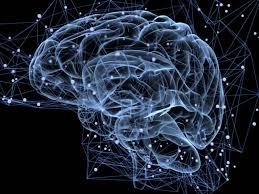A nurse is caring for a client who has a new diagnosis of schizophrenia and a prescription for an antipsychotic medication. The nurse should recognize that which of the following indicates an adverse effect that must be reported to the provider?
The client is observed displaying a shuffling gait while walking in the hall.
The client is observed mumbling quietly while alone in the day room.
The client states, "I feel light-headed when I stand up quickly."
The client states. "Being in the sun seems to really hurt my eyes
The Correct Answer is A
Choice A reason
The client is observed displaying a shuffling gait while walking in the hall is the correct answer. The nurse should recognize that observing a shuffling gait in a client who is taking antipsychotic medication is an adverse effect that must be reported to the healthcare provider. A shuffling gait is a movement disorder known as parkinsonism, which can be a side effect of some antipsychotic medications, particularly first-generation or typical antipsychotics.
Parkinsonism includes symptoms similar to Parkinson's disease, such as a shuffling walk, muscle stiffness, tremors, and difficulty with balance and coordination. It can occur as a result of blocking dopamine receptors in the brain, leading to an imbalance in dopamine levels.
Choice B reason:
The client mumbling quietly while alone is not correct because in the day room may be related to the symptoms of schizophrenia, and it does not indicate an adverse effect of the antipsychotic medication.
Choice C reason:
The client feeling light-headed when standing up quickly is not correct and it may be related to postural hypotension, which can be a side effect of some antipsychotic medications. While it should be monitored and reported if persistent or severe, it is not as urgent as reporting a shuffling gait.
Choice D reason:
The client stating that being in the sun hurts their eyes does not necessarily indicate an adverse effect of the antipsychotic medication. It may be related to other factors or unrelated to the medication.

Nursing Test Bank
Naxlex Comprehensive Predictor Exams
Related Questions
Correct Answer is B
Explanation
The correct answer is choice B. The nurse should sit in a chair next to the bed to place the client at ease. This position allows the nurse to maintain eye contact, show interest, and respect the client’s personal space. Sitting on the bed next to the client (choice A) is wrong because it invades the client’s privacy and comfort zone. Standing at the side of the bed (choice C) or at the foot of the bed (choice D) is wrong because it creates a power imbalance and may intimidate the client.
The nurse should also consider the client’s condition and preferences when choosing a position for the interview. For example, a client who is on bedrest may have difficulty hearing or seeing the nurse if they are too far away or at an awkward angle.
Therefore, the nurse should adjust their position accordingly and ask the client if they are comfortable with it.
Correct Answer is A
Explanation
The correct answer is Choice A.
Choice A rationale:
- Acknowledges the client's feelings:It's important for the nurse to validate the client's concerns and let them know that it's understandable to feel nervous or uncertain about ECT.
- Provides information about the treatment:The nurse can offer information about the potential benefits of ECT,but it's important not to pressure the client or make them feel like they have to go through with it.
- Reassures the client of their right to change their mind:This is a crucial aspect of informed consent.The client has the right to withdraw their consent at any time,even after signing the consent form.
Choice B rationale:
- Places undue pressure on the client:This response implies that the doctor knows what's best for the client and that the client should go through with the treatment even if they have doubts.This can undermine the client's autonomy and decision-making ability.
Choice C rationale:
- May minimize the client's concerns:While rescheduling the treatment is an option,it's important to explore the client's concerns more thoroughly before suggesting this.It's possible that the client has valid reasons for not wanting to go through with ECT,and these reasons should be addressed.
Choice D rationale:
- Is disrespectful of the client's autonomy:This response suggests that the client is obligated to go through with the treatment simply because they signed a consent form.This ignores the fact that people can change their minds and that consent is an ongoing process.
Whether you are a student looking to ace your exams or a practicing nurse seeking to enhance your expertise , our nursing education contents will empower you with the confidence and competence to make a difference in the lives of patients and become a respected leader in the healthcare field.
Visit Naxlex, invest in your future and unlock endless possibilities with our unparalleled nursing education contents today
Report Wrong Answer on the Current Question
Do you disagree with the answer? If yes, what is your expected answer? Explain.
Kindly be descriptive with the issue you are facing.
